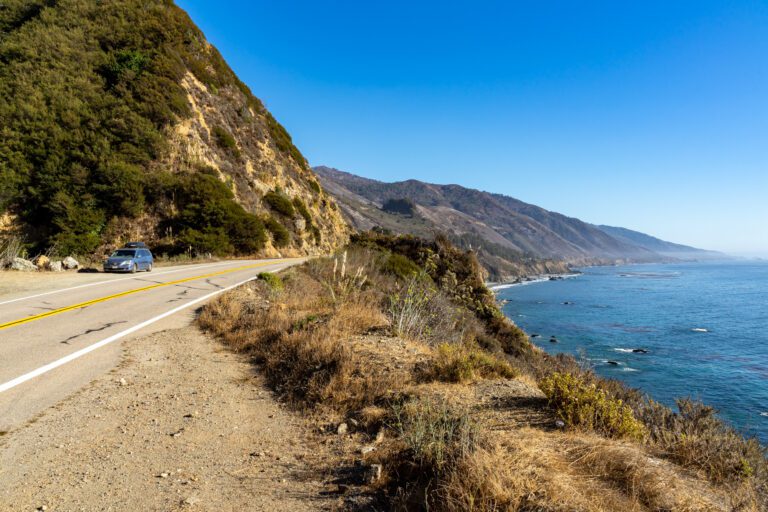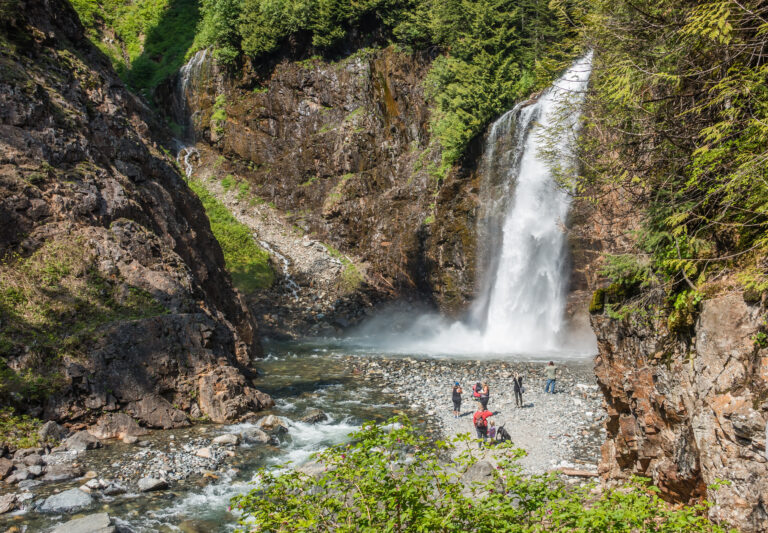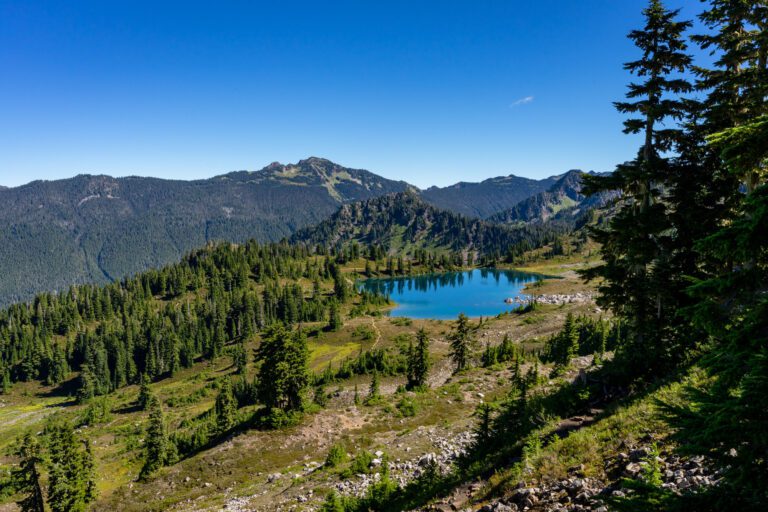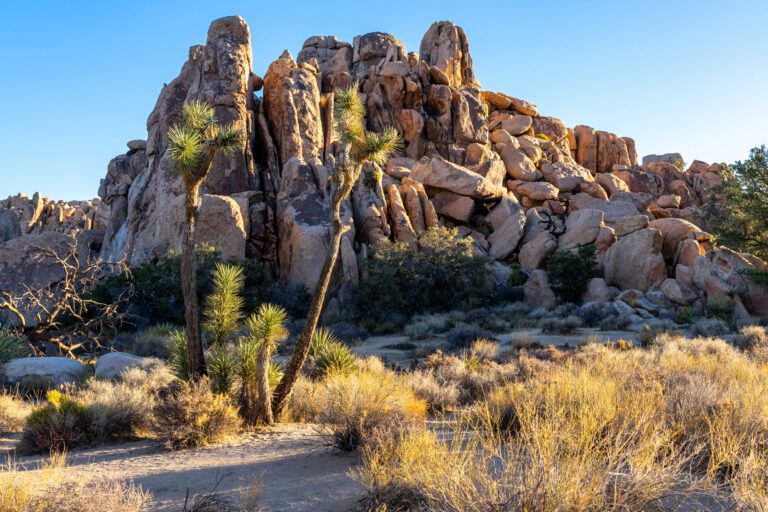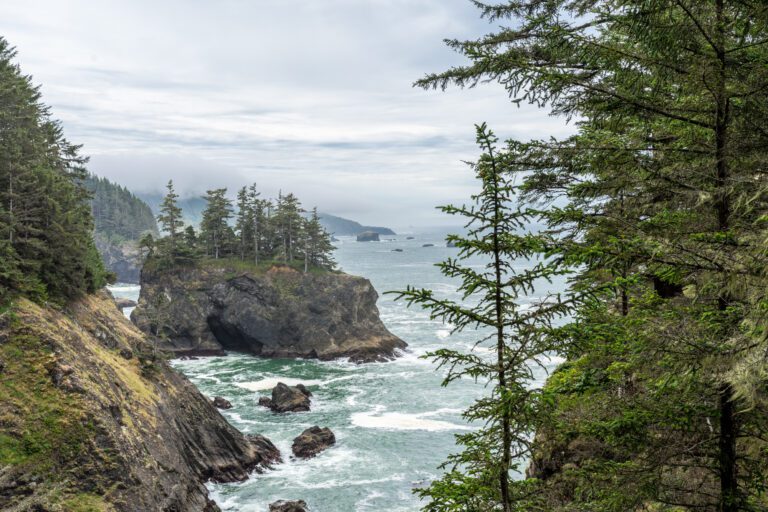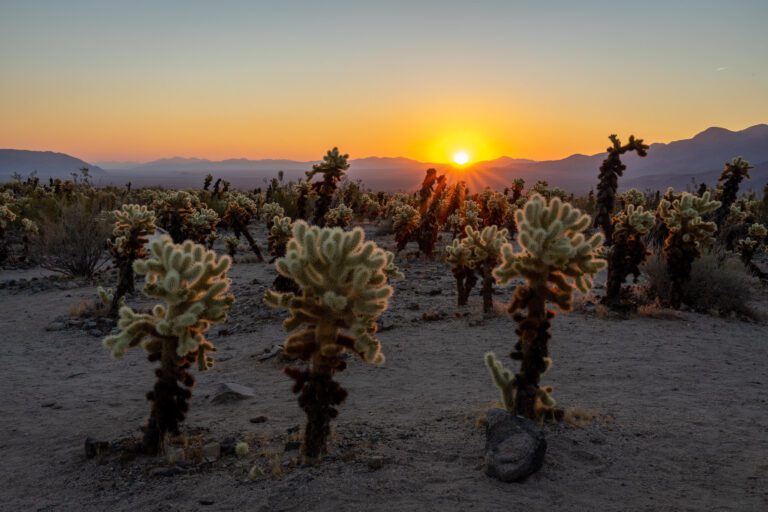How to Plan an Incredible Seattle to Crater Lake Road Trip
The Pacific Northwest might just be paradise on earth. From spectacular mountain ranges, forests, and beaches, to vibrant cities like Portland and Seattle—what more could you want? And, one of the best ways to see this fair land is with a good old-fashioned road trip! Here I’ll give you all the details about a Seattle to Crater Lake road trip so you can enjoy both states in all their splendor.
Although I’m a Portland resident, Seattle is like that old childhood friend that you’re always making an excuse to go see and I’ve been there more times than I can count. Really, I consider the entire Pacific Northwest my home and the border between Oregon and Washington is frequently blurred in my peregrinations.
So why drive all the way to the breathtaking Crater Lake? It’s not merely because it’s the deepest lake in the United States or that it’s the only national park in Oregon, but its unique location makes it an ideal destination to see the best of the best in both Oregon and Washington. So buckle up and let’s hit the road!
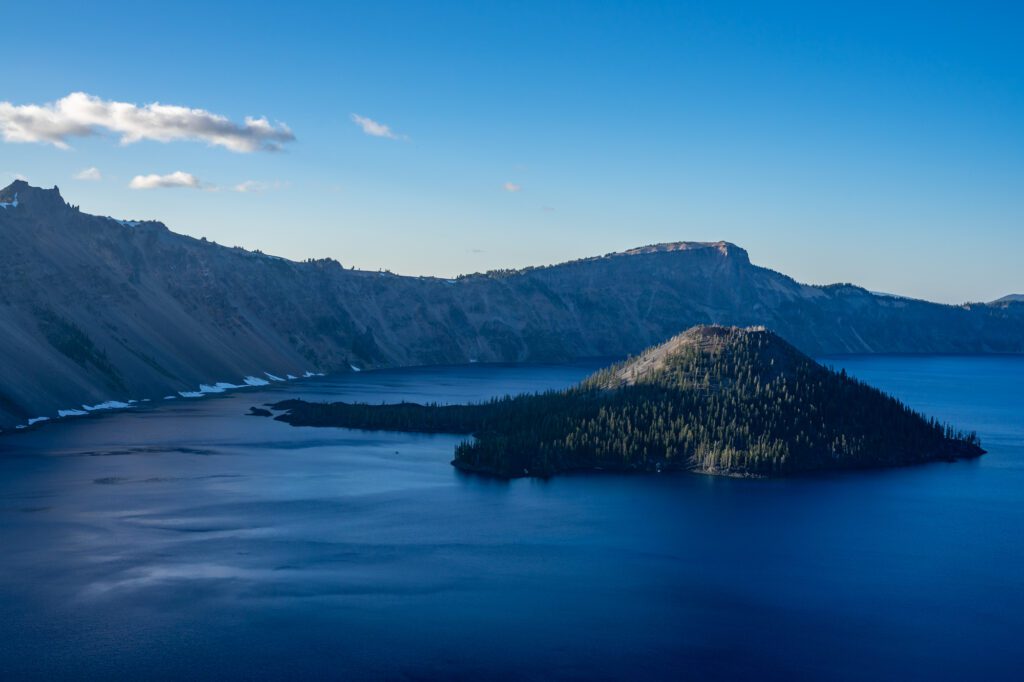
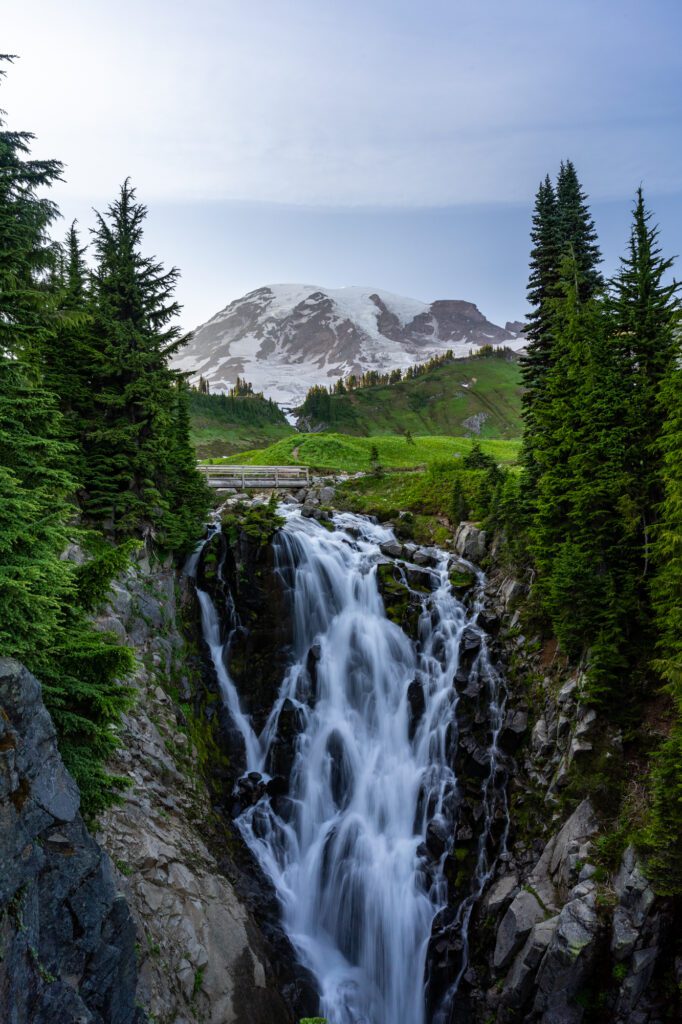
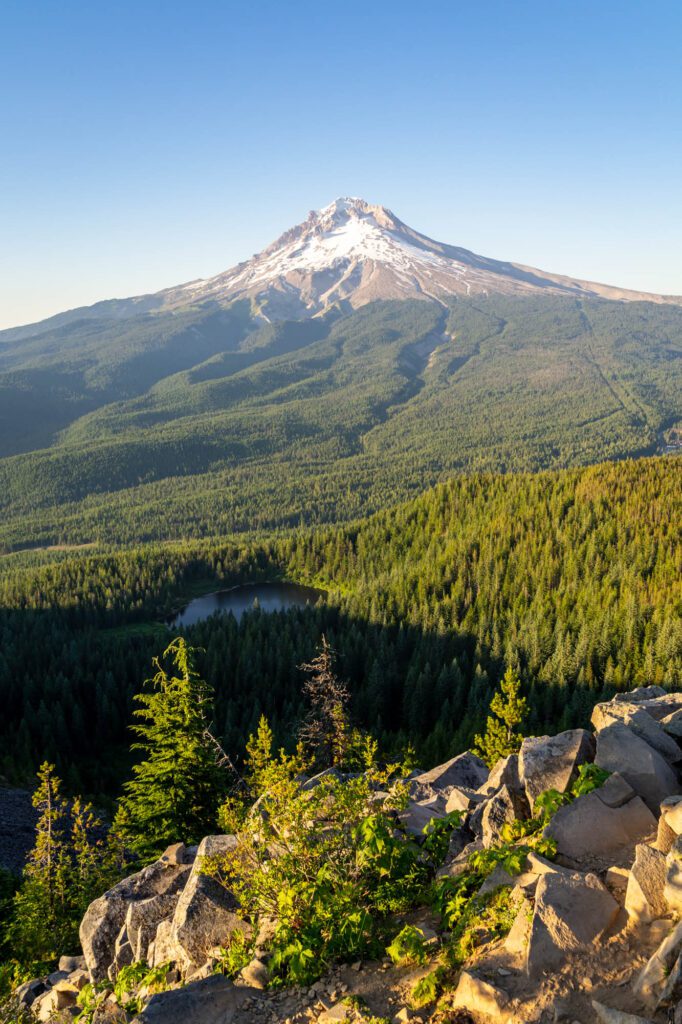
Disclaimer: Some of the links in this post, like hotel and vacation rental links, are affiliate links, meaning at no additional cost to you we make a little bit of money if you click through and book. That being said, we would absolutely never recommend something to you that we don’t stand behind 100%.
How Many Days Do You Need to Drive from Seattle to Crater Lake?
Technically, this trip can be done in two days. As a straight shot (or as close to a straight shot as you can get), it’s a seven to eight hour drive each way, but those are two looooong days without much time for exploring. P
lus, I always feel like I hit more traffic driving into Seattle than out, so when you’re returning from Crater Lake to Seattle you may want to allow for more time.
That said, it can be done and in my younger years I’ve done much crazier drives (like a non-stop trip from San Diego to Talkeetna, AK with rotating drivers and sleeping in the car—oh the things you’re capable of when you’re 20!).
So, if you leave early in the morning from Seattle to bypass traffic, you could conceivably get to the lake by mid-afternoon and still have time to take a hike and relax before crawling into your tent. You could even hit up a second hike in the morning before heading back if your schedule is flexible.
But, is that really the best way to spend two days? Maybe, if you’re young and impetuous.
But for most of us, you’ll want at least five to seven days with at least a day and a half dedicated to Crater Lake. This will give you enough time for sightseeing, overnight stops, and to really take advantage of your time in the Pacific Northwest.
What Route to Take From Seattle to Crater Lake?
There are three main options when driving from Seattle to Crater Lake, and which one you choose will depend on where you want to stop and how much time you’ve got to spend. From Seattle to the Oregon border, there’s really no better route than old, reliable I-5, but from there you’ve got options.
Option 1: Straight down I-5, cut east at Roseburg
For this option, you’ll stay on I-5 into Oregon and go straight down to Roseburg where you’ll head east on Hwy 138, then south on US 97 which takes you to the lake.
This is a direct route, and though it’s not the most exciting there are some noteworthy reasons you may want to consider it.
One, you can do an overnight in the hippie/college/artsy town of Eugene.
Two, you’ll get to drive through the Umpqua National Forest and stop at the magical Toketee Falls.
And three, the area surrounding Roseburg is also kinda a hidden gem for wine lovers (and downtown Roseburg has a fun, small-town-charm kinda vibe).
Option 2: I-5 to the OR/WA border, then head east in the Columbia River Gorge
Option 2 (my favorite) has you on I-5 through Washington, but you’ll make a beeline east into the Columbia River Gorge when you hit the Oregon border. Here you’ll drive along either SR 14 on the Washington side or I-84 along the Oregon side.
The 84 is a bit faster and just as lovely, so you should probably default to that unless you’re planning on a hike on the Washington side (and in my opinion, the Washington side hikes are superior). Eventually you’ll end up in the cute, windy town of Hood River where you’ll proceed south to Bend and then on down to Crater Lake.
This route gives you the most bang-for-your-buck, lets you see several major peaks of the Cascade Range, and is the one I’ll be focusing on in this post.
Option 3: I-5 to either Highway 20 or 126
This is a nice, slightly longer option than the first one, and is really best done in the summertime. Both Hwy 20 out of Salem and Hwy 126 (the Mckenzie River Scenic Byway) out of Eugene are gorgeous routes that wend their way slowly eastward.
On the 20 you’ll pass by a handful of lakes and eventually run smack dab into Black Butte (where you can stop for an awesome, moderately hard hike), and then through one of my favorite towns in all of Oregon, Sisters. From here, you’ll head south through Bend and on down to the lake.
On the 126, you’ll drive alongside the shockingly blue and beautiful McKenzie River, past the Belknap Hot Springs(great place to spend the night), by Sahalie Falls and Proxy Falls, and finally into Sisters.
When to Drive from Seattle to Crater Lake?
There’s actually no time of the year that you can’t drive to Crater Lake since the road up to the lake is regularly plowed. However, if you’re tackling it in the winter, please be prepared with a 4WD vehicle and/or carry chains. The main road into the park may be cleared, but that doesn’t mean all the passes to get there will be as easy.
Summer and fall are my favorite times for this kind of trip. You’ll get the best weather (duh), but you’ll also have more options for activities along the way and a better chance of actually seeing the lake when you do get there. Often in the winter months, the clouds and fog can be so thick it’s like looking into a white abyss.
Need to know: There are three entrances to Crater Lake, but only the south entrance is open year-round. The north entrance is always closed in the snowy months (roughly November – May, although you may see this bleed into October and June). The west entrance is open more often, but if there’s been a lot of snow it’ll be closed too.
Always, always, always check conditions before you go!
Also note that one of the coolest things to do at the park is drive the perimeter of the lake on the 33-mile Rim Drive, but this too closes in the winter.
Sections of it will reopen as weather allows, and the whole route is usually clear by July. This generally means that the west side opens first in May/June, followed by the east side in June/July. In the winter, they’ll sometimes plow one mile of the west side up to Discovery Point so you can still get a short hike and stellar views. Again, check conditions!
The Best Stops to Make on a Seattle to Crater Lake Road Trip
Of course the route you choose will dictate what stops are available, but for our purposes I’ll be using route option 2, which takes you down I-5 through Washington, and cuts east through the Columbia River Gorge before turning south to Bend.
Mount Rainier National Park
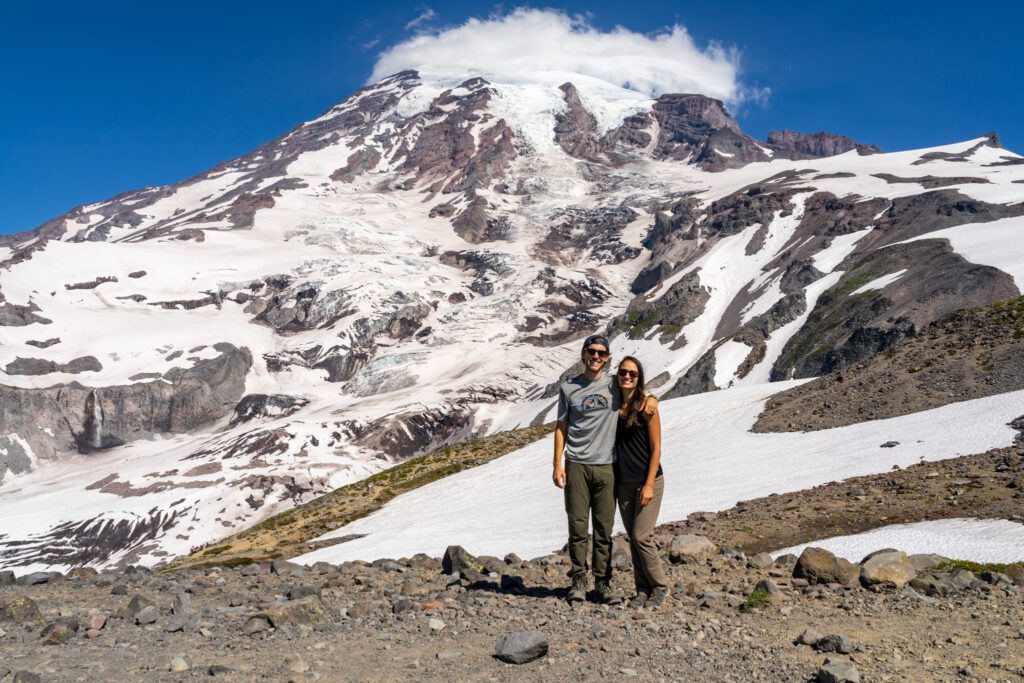
Drive time from Seattle to Mount Rainier (Paradise): 2 hours 30 minutes / 100 miles
What better way to start your trip than visiting the tallest mountain in the Cascade Range? Standing at an imposing 14,411 feet (the fifth tallest mountain in the contiguous United States), Mount Rainier is well known to all Seattlites since it towers over the city skyline. And, the outstanding national park that surrounds it is reachable within about two hours from the city.
The mountain is big and there’s fun to be had throughout the whole park, but for our proposed route I’ll focus on the Paradise side (the south slope of the mountain) for easier access from I-5.
Whether you’re just stopping for a hike or staying the night, you should always check the status of the trails in the area to see how much snow coverage there is.
Hands down the most popular hike in this area is the Skyline Trail, and if you’ve ever done it you’ll know why. The trailhead is roughly two and a half hours from Seattle, and can be done as a snowshoe hike in the winter months, but it really shines in the summer (though even then you’ll see snow!).
The hike keeps the peak of Rainier in your field of vision basically the whole way up to Panorama Point at 6,800 feet. Here, you can see down to Mount Adams, Mount Hood, and St. Helens. There’s a large open space to have a snack and take in the views before heading back down and continuing the loop.

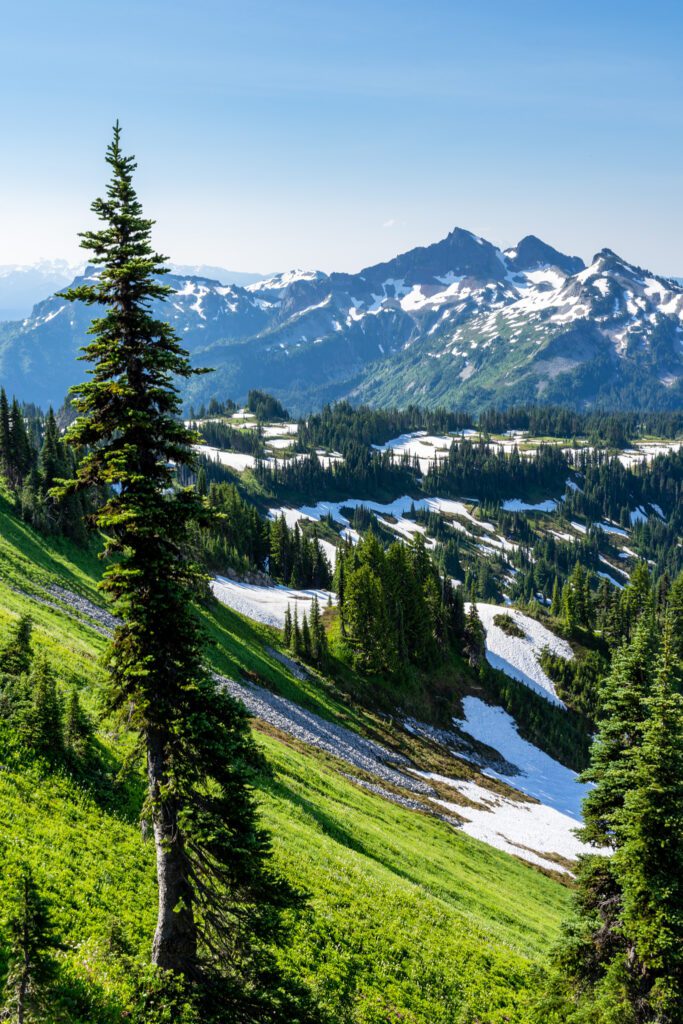
A shorter option is the hike from Reflection Lake to Narada Falls. This one is a must-do if you’re a photographer (or just a skilled iphone user) to get some incredible shots of Rainier reflected in the lake below. Note that swimming is prohibited here, so you’ll have to find other ways to cool off if it’s a hot day. This one is also snow-shoeable, though you should check road conditions first to make sure you can get there.
Mount St. Helens
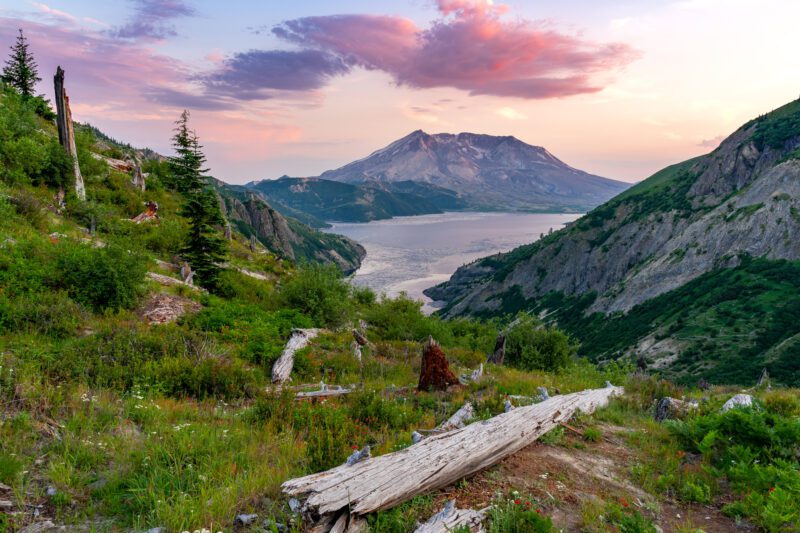
Drive time from Mount Rainier to Mount St. Helens (Johnston Ridge Observatory): 2 hours 50 minutes / 130 miles
If you’re hoping to get a few more miles under your belt before stopping but you still want to explore the mountains, continue south to the next major peak in the Cascades, Mount St. Helens.
Once standing at 9,677 feet, on May 18, 1980, this active volcano blew its top and reduced its size to a puny 8,363 feet—a good reminder that all the mountains in the Cascade Range are active volcanoes, and one erupted a mere 42 years ago which in geological time is like a nano-second.
St. Helens is uniquely cool because you can check out the first-hand evidence of what happens to a volcano after it erupts. And yes, you’ll also see a post-exploded volcano down at Crater Lake, but that happened like 7,700 years ago.
Start at the Johnston Ridge Observatory to get spectacular views of the crater. From here, head out on Harry’s Ridge Trail that will take you through the blast zone and on to great views of Spirit Lake.
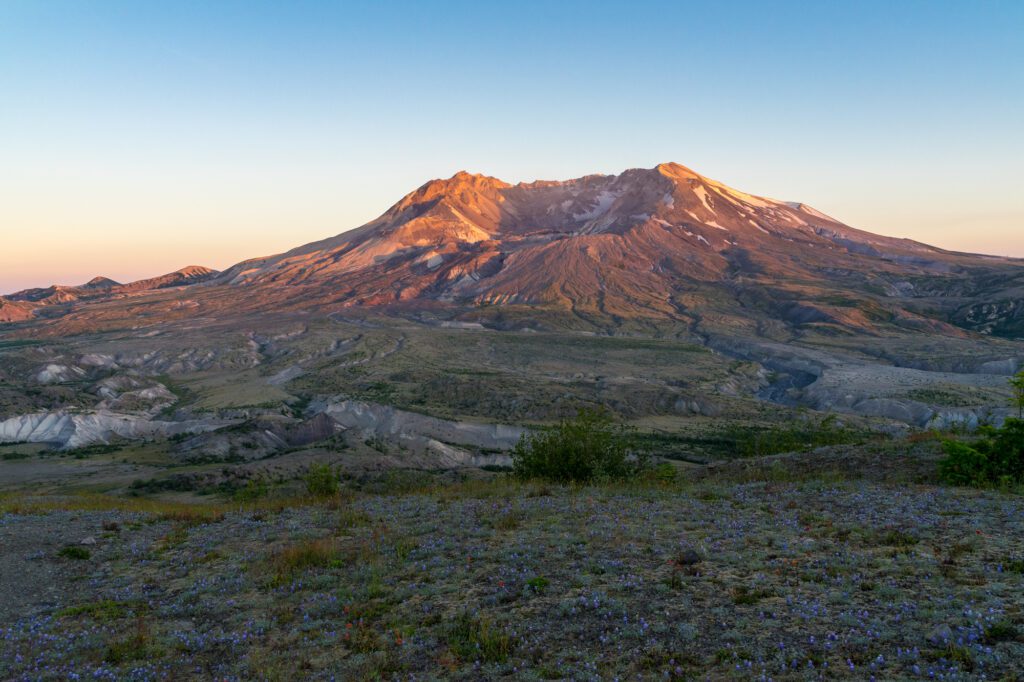
Fun Fact! Harry’s Ridge is named after Harry Randall Truman (no relation to the 33rd president) who was killed in the blast when he refused to evacuate. Allow me to digress: I used to teach middle school in Vancouver, WA and we did an assignment where my students had to write from the perspective of someone who lives through a natural disaster, and we used Harry Truman as an example!
During the lesson, I would always make them watch this INCREDIBLE MUSIC VIDEO THAT YOU SIMPLY MUST SEE about Truman. This “#1 hit” will be in your head for days. You’re welcome.
Portland, Oregon
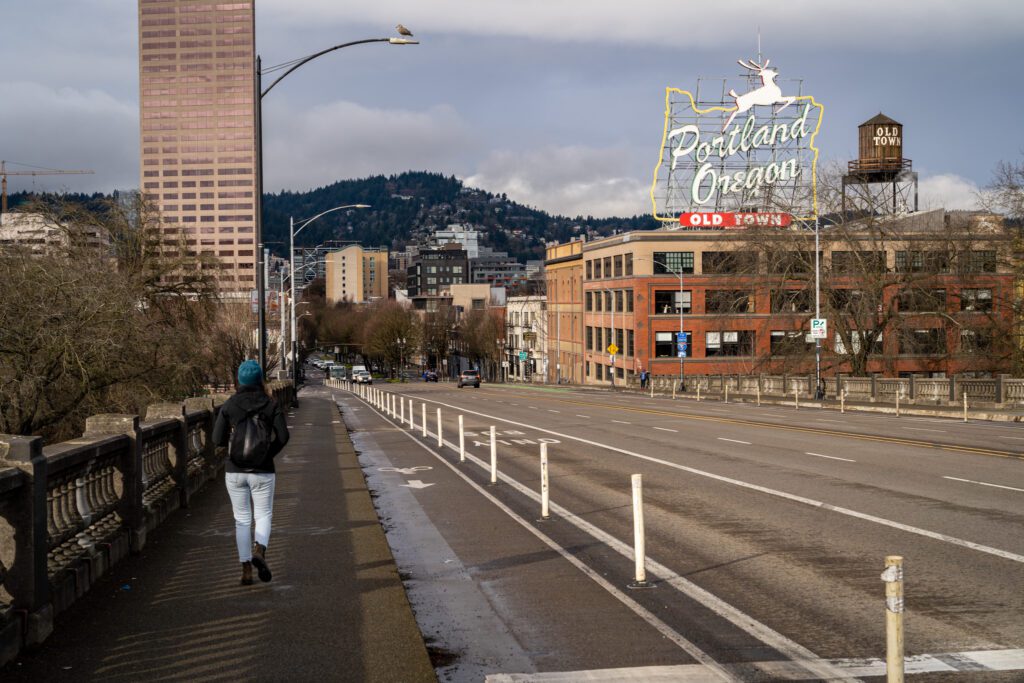
Drive time from Mount St. Helens to Portland: 2 hours 10 minutes / 110 miles
Ahhh, Portland. I could write forever about you (and have if you’ve seen my earlier posts). This is an excellent overnight option and is only three to three and a half hours from Seattle, but that is highly dependent on traffic.
I’ve written extensively about the City of Roses, and if you do end up spending an afternoon and evening here, check out my other posts here, here, here, and here for all you need to know.
If you’re just staying one night, a hotel is probably your best and easiest bet. You’ll find the most options downtown or across the river in the central eastside. Parking will be easier on the eastside.
Looking to explore Portland? We have plenty of other Portland travel guides (written by a Portland local) to help you discover something new and exciting.
- 16 Amazing Day Trips from Portland, Oregon
- 12 Perfect Weekend Getaways from Portland, Oregon
- The 13 Best Hikes Near Portland, Oregon: Complete Portland Hiking Guide
- Where to Stay in Portland, Oregon: A Complete Guide to 8 Neighborhoods
- How to Spend a Weekend in Portland (Complete 3 Day Itinerary)
- The Best Parks in Portland: A Local’s Take on Portland’s Parks
The Columbia River Gorge
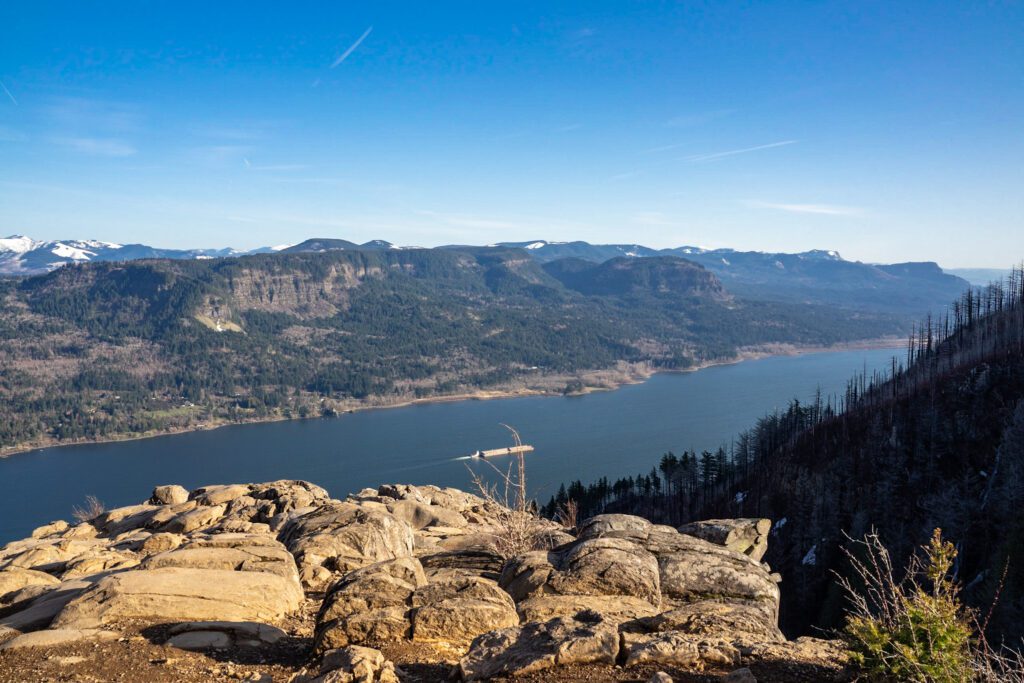
Drive time from Portland to the Gorge: 35 minute / 30 miles to the closest hike at Latourell Falls
If you’ve never spent time in the Columbia River Gorge, make sure to do it now. I’m not just saying that because it’s in my own backyard—it’s truly amazing! And, if you stayed in Portland the night before, it makes the perfect morning stop for some views and hikes!
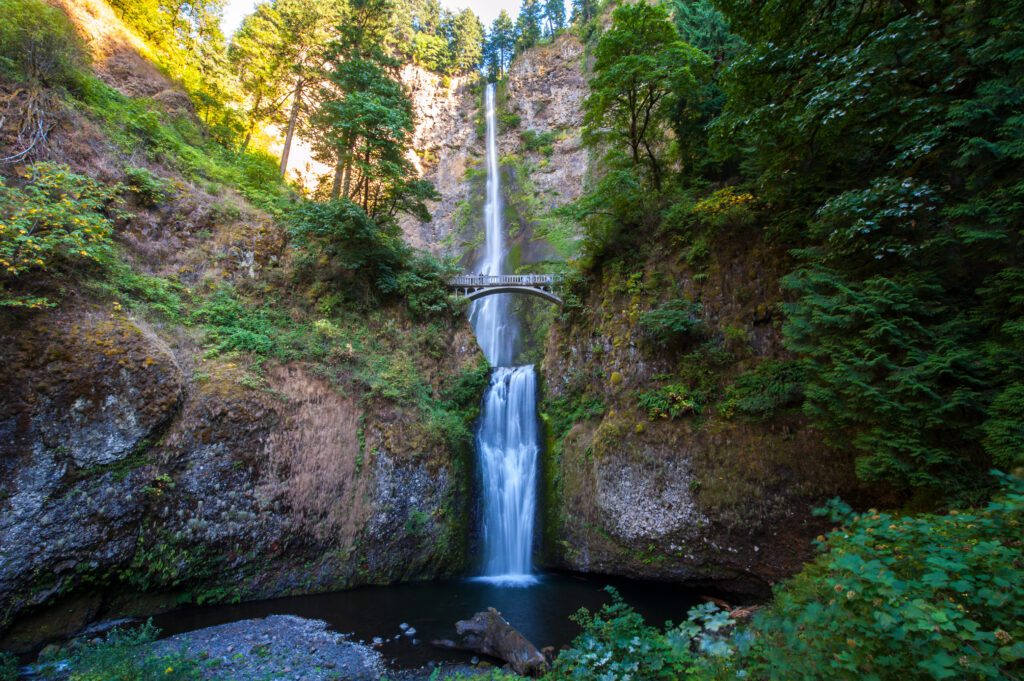
Multnomah Falls is the crown jewel of the Gorge and is by far the busiest tourist attraction in the area. Even if you’re traveling mid-week, the parking lots will be packed by 9:00 am on a sunny day. If you don’t mind crowds, you can park and see the striking 620 foot falls right from the road, but the one-mile hike up to the top is worth it and surprisingly strenuous.
If you’re looking for a moderately difficult hike that awards you sweeping views of the area, I always recommend Angel’s Rest. Like Multnomah Falls, it will be busy and they’ve also recently restricted where you’re able to park, so you may have to walk along the road a while to get to the trailhead.
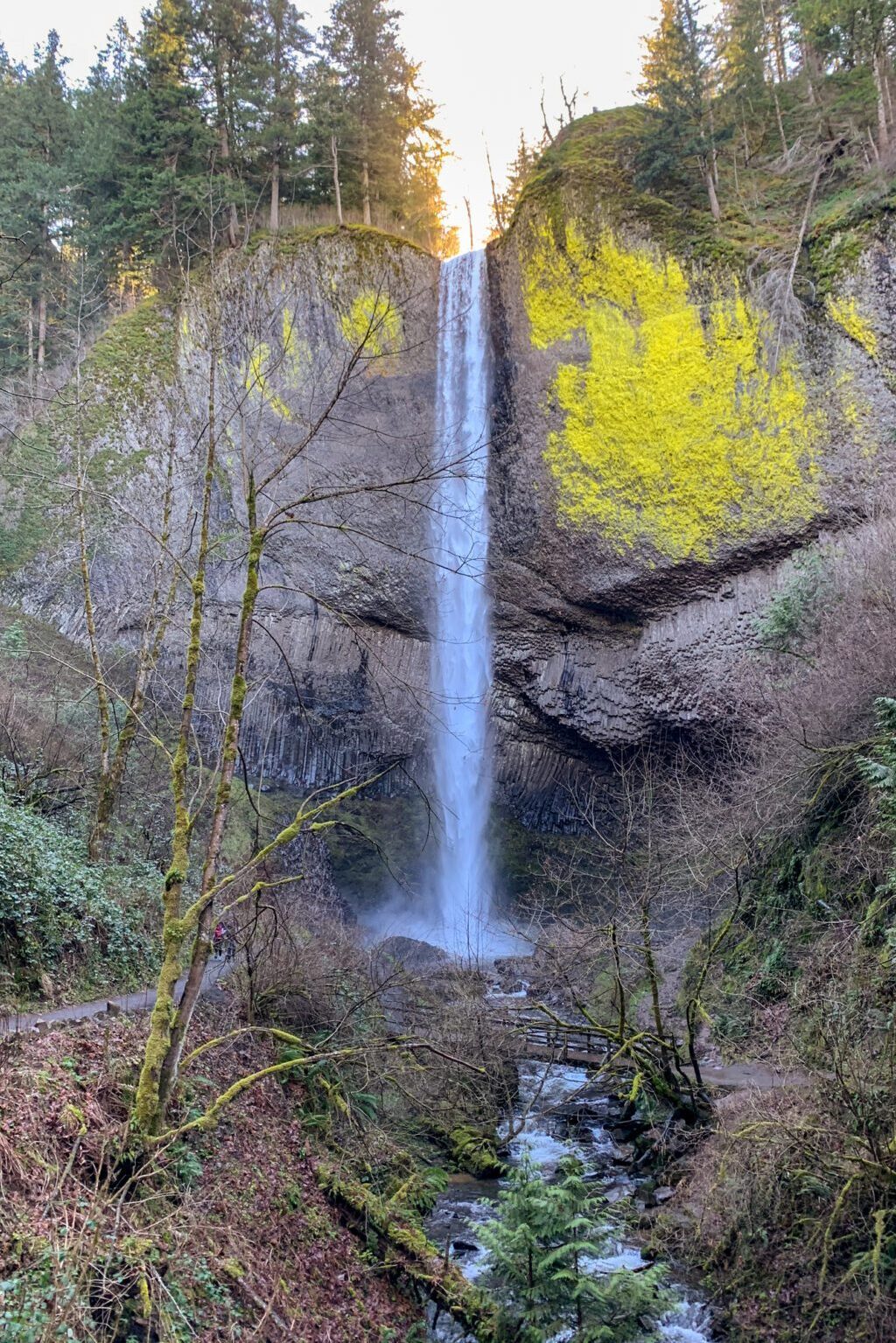
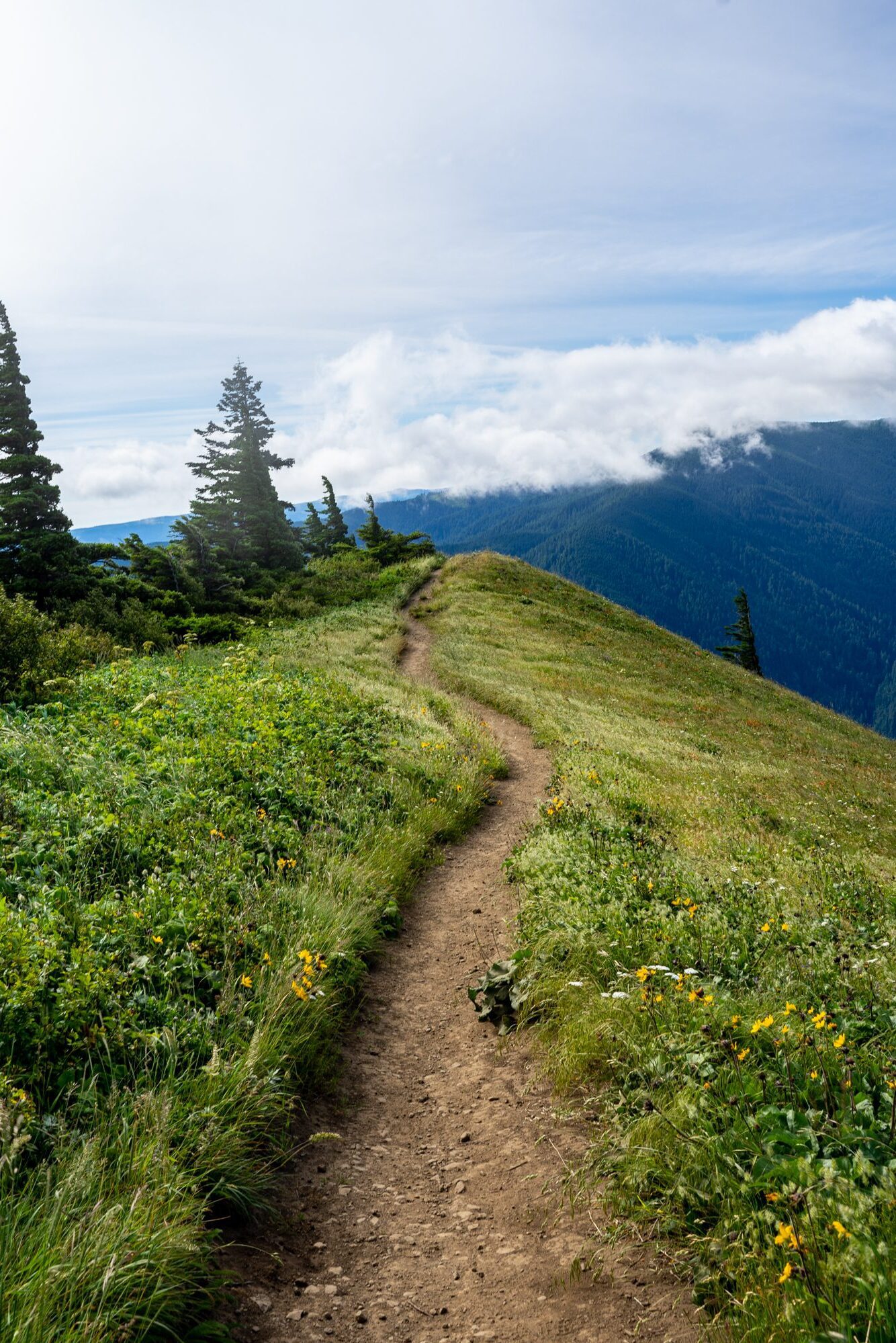
Another one of my favorites is Eagle Creek Trail to Punchbowl Falls. This trail was closed for a few years after the fires in 2017, but I’m elated that it’s back open. The Eagle Creek trail is so quintessentially the Gorge and the falls at the end are incredible (and swimmable!)
If you’re on a shorter time frame, but still want those stunning views, drive up to the Vista House.
And, if you’re curious about even more hiking options, check out my complete guide to hiking in the Gorge.
Hood River
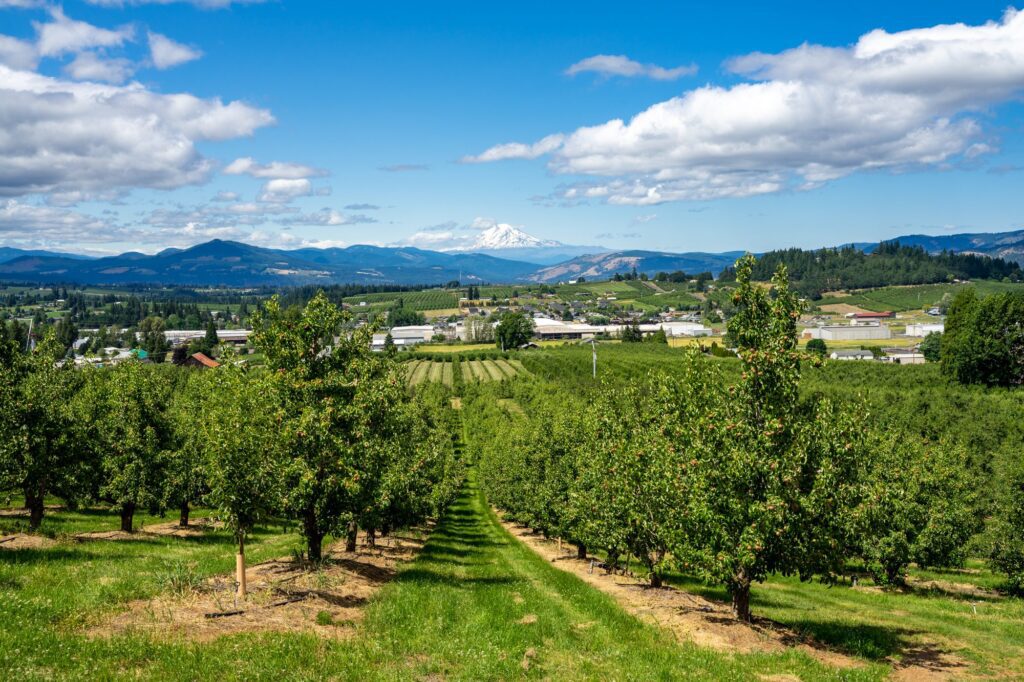
Drive time from the Gorge to Hood River: 20 – 50 minutes depending on what trailhead you’re leaving from
Hood River is just about the cutest town ever and it’s almost exactly an hour east of Portland along I-84. If Portland isn’t quite far enough for you to call it a day, consider Hood River as an excellent overnight option. Hood River is a favorite day-trip destination for Portlanders and there’s enough to do around the area to keep you busy for days.
If you’re in Hood River in the summer or fall, consider driving the Fruit Loop, a 38-mile road tour of the local farms that includes cider, beer, and wine.
Or, stroll down Oak Street and check out the shops, get a scoop of banana ice cream at Mike’s (cash only), then end your day with beer and pizza at Double Mountain Brewery.
Two of my favorite places to stay here are the Society Hotel in Bingen (just across the river from Hood River) or the Adventure Lodge. The former is a bit swankier and expensive, and the latter will give you cheaper (but still nice) options including shared bunk rooms for the budget traveler.
Mount Hood
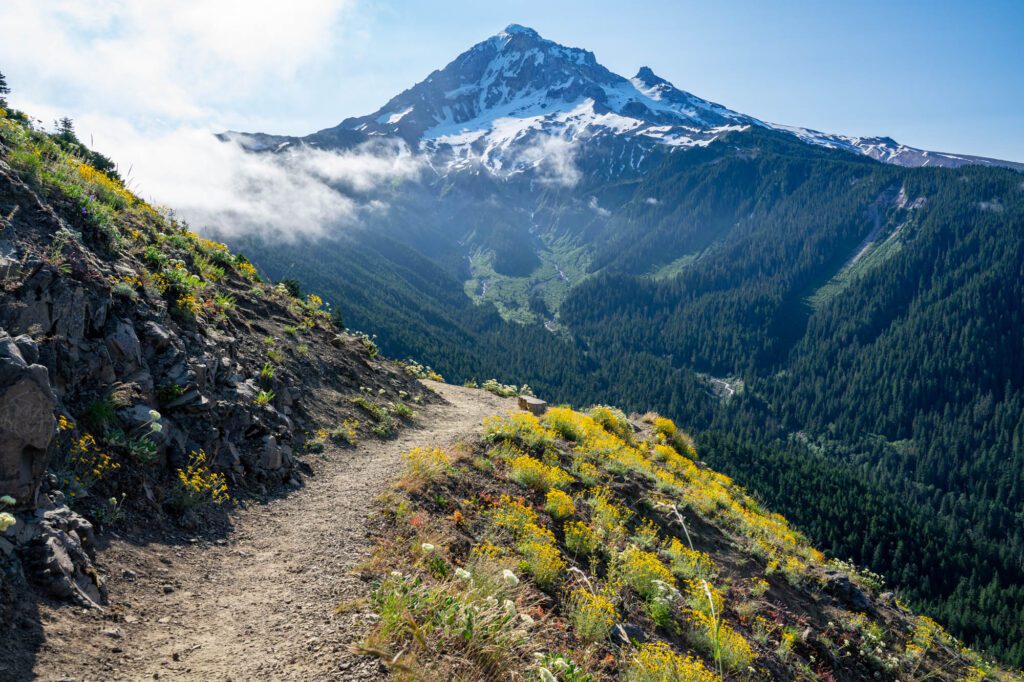
Drive time from Hood River to Mount Hood (Elk Meadows): 40 minutes / 33 miles
Directly south of Hood River presides Mount Hood, and just like Rainier and St. Helens before them, there’s no end to the outdoor adventures available.
I’ll give you a few options here, but you should check out my longer post on hiking around Mt. Hood for a more complete rundown of your choices.
Since you’ll be coming from Hood River, it’ll be easiest to stick to hiking on the north and east sides of the mountain. A super accessible option is the lovely Tamanawas Falls, a moderate 3.5 miler that takes you to a 150 foot waterfall.

If you’re looking for something harder with some killer views, hike up to Copper Spur and the Eliot Glacier on the north side of the mountain. Cooper Spur is the highest point on the mountain (8,510 feet!) that can be reached by trail (any higher is considered a technical climb).
Lastly, you can explore the beautiful Elk Meadows (also a fantastic overnight spot for my fellow backpackers!). It’s especially lovely in the late spring for its abundant wildflowers.
Smith Rock State Park
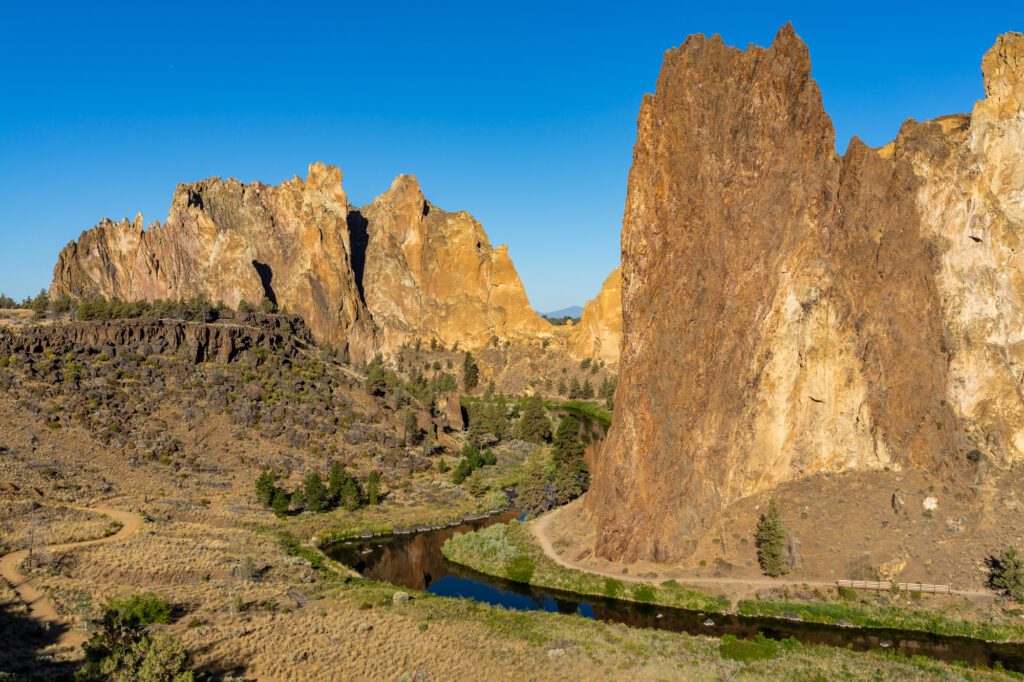
Drive time from Mount Hood to Smith Rock: 1 hour 40 minutes / 91 miles
As you continue south towards Bend, another must-do stop is Smith Rock State Park. This is a world-renowned area for climbing, but it also has incredible hiking available. The best and most popular hike is Misery Ridge which is well-worth all the potential misery it brings to you. Admittedly, I’ve done it on a 97 degree day and it was pretty brutal since there’s almost no tree cover. But, it does give you the best views of the area and you’ll be able to gawk at the climbers on Monkey Face.
Bend, Oregon
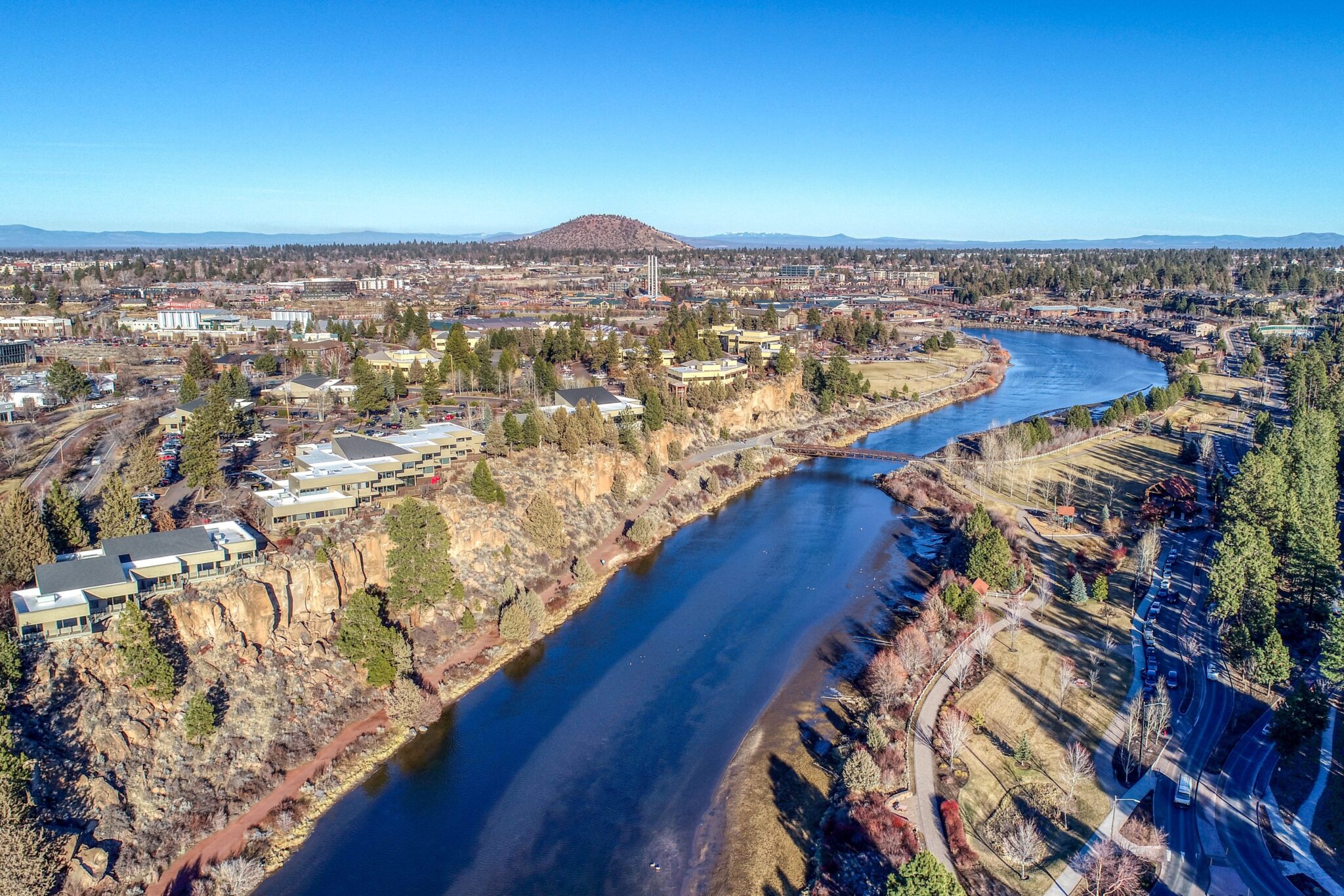
Drive time from Smith Rock to Bend: 35 minutes / 26 miles
Bend is your last “real city” before your final destination of Crater Lake, and when you’re here you’ve got to check out the local beer scene, with a shout out to my favorites: Boneyard, GoodLife, and Monkless Belgian Ales.
For hiking, try the longer but phenomenal Green Lakes Trail, or the shorter but just as amazing Tumalo Falls hike.
Bend is also an ideal overnight stop before heading down to the lake. For a fun alternative to hotel life, try the Bunk and Brew for hip, hostel living. Or, for a more traditional (but still Oregon-y) experience, try the Old St. Francis School, one of the many inventive hotels done by the McMenamin brothers. The soaking pool alone is enough to make the trip worth it.
Seattle to Crater Lake Itinerary Ideas for 5 and 7 Days
Now that we’ve covered the best stops to make along the way, let’s get into exactly how to plan your time.
Seattle to Crater Lake In 5 Days
Five days for a Seattle to Crater Lake road trip is plenty of time to see the sights and not feel too rushed. If you can, try to time your trip so days 3 and 4 are midweek to avoid major crowds at the lake (okay, it’ll still be crowded no matter when you go, but mid-week will be slightly better).
- Day 1: Seattle + Mount Rainier National Park + Portland
- Day 2: Portland + Columbia River Gorge + Bend
- Day 3: Bend + Crater Lake
- Day 4: Crater Lake + Bend
- Day 5: Bend to Seattle
Day 1: Seattle + Mount Rainier National Park + Portland
Bid adieu to the Emerald City and start making your way south, but not too far! Your first stop will be in Paradise to hike the six mile Skyline trail loop for drop-dead gorgeous views of the mountain.
Then you’ll make your way into Portland where there are a million places to stay and eat, but I’ll choose just one for now. Lolo Pass is like an elevated hostel in the central eastside and has genuinely nice and affordable rooms (private or shared).
With all the money you just saved, get some wings and beer at Fire on the Mountain and see a show at Revolution Hall—both walking distance from the hotel!
Day 2: Portland + Columbia River Gorge + Bend
Grab coffee and a breakfast sandwich at Triumph Coffee before jumping on the 84 and heading into the Columbia River Gorge. Your ultimate destination today is Bend but ideally you can get in a hike beforehand, and depending on your energy level you can keep it light or go big.
A beautiful and pretty easy hike is Latourell Falls, but if you really want a workout hit up Hamilton Mountain or Dog Mountain (both on the Washington side).
Hood River is always a great spot for lunch (Broder Øst or El Cuate are two stellar options), but if you’re already on the Washington side, consider the charming Gorge town of Stevenson and go to Walking Man Brewery.
Then you’ll continue south past Mount Hood and on into Bend. If you’re looking for a unique place to stay with tons of personality, rent a vintage airstream trailer at The Camp then walk a block north for tacos and margs at El Sancho.
Day 3: Bend + Crater Lake
Of course there’s a million things to do in Bend, but your ultimate destination is Crater Lake and you want to devote as much time as possible to it. Plus, you’ll be staying in Bend on the way back, so hit the road early (after grabbing coffee and a pastry at Palate).
The drive is only about an hour and a half and if you don’t yet have a campsite reserved, you’ll want to boogie down and snag one of the first-come-first-serve spots at the Mazama Campground. The campground is about 15 minutes from the actual lake, so set up your tent and get everything ready so you can spend the rest of the day exploring.
Another option is the Crater Lake Lodge (which is right on the lake), but it books up like a year in advance.
My two previous guides on Crater Lake outlining the best hikes and sample itineraries will give you more comprehensive information, but at minimum you should do at least one hike.
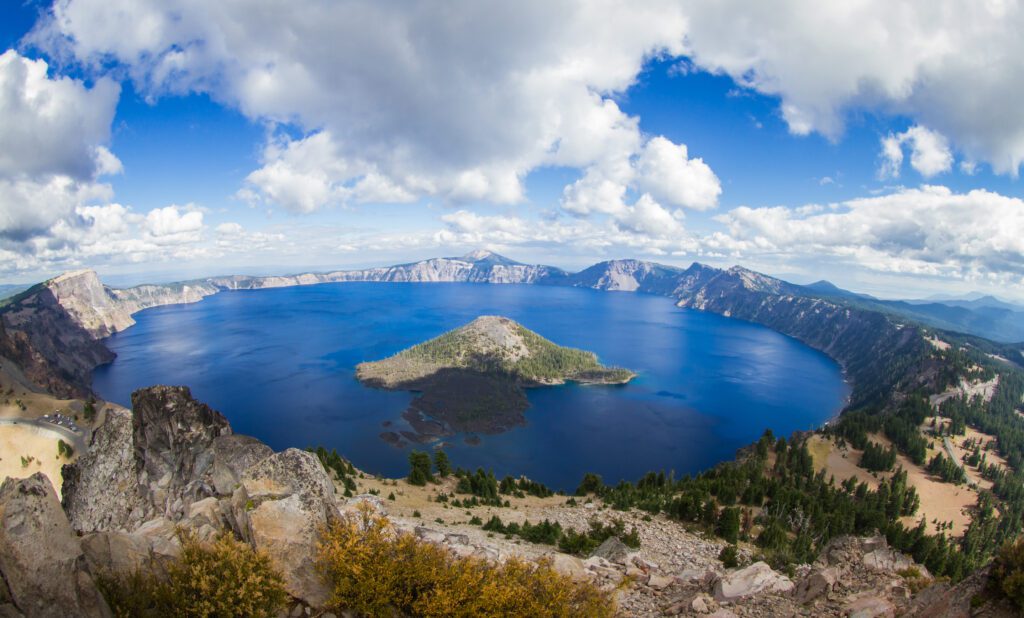
For the best views, you can’t go wrong with The Watchman Peak Trail, or if it’s a sunny day and you’re feeling like a (very cold) swim, hike down into the caldera on the Cleetwood Cove trail.
The other must-do activity is driving as much of the rim as you can (subject to snow closures). I’m not much for a car tour in general, but this is the exception to the rule! Plus, there are plenty of places to pull over to stretch your legs and snap some photos.
Day 4: Crater Lake + Bend
If you can drag yourself out of bed in time, catch the sunrise from the Garfield Peak Trail or the Discovery Point trail. These are both spectacular with or without the sunrise so go even if you sleep in. But, if you’re anything like me you always wake up at like 5:30 am when camping no matter what.
You’ll drive back to Bend today, but ideally you’ll spend at least a half day in the park doing whatever you were unable to do yesterday.
When you get into Bend, I recommend dinner at either Joolz for fresh, Mediterranean food or Wild Rose Thai, both in the Old Bend district.
Stay at the Old Francis School and you’ll be within walking distance of both spots!
Day 5: Bend + Seattle
You’ve got a fairly long drive today (about six hours), but if you’ve still got some energy, you should stop by Smith Rock State Park even if it’s only for an hour.
From here, you’ll head straight to Portland which makes it an ideal spot for lunch.
Because your route kinda skirts the eastern edges of town, go to Level Beer for delicious brews (my fave is the Let’s Play Pilsner) and lots of good food options from the carts in the parking lot.
They also have a huge outdoor seating area with lawn games which affords you a nice stretch before getting back in the car and heading home.
Seattle to Crater Lake in 7 Days
A full week on the road is something to celebrate, but it’ll be over before you know it so you’ve got to make the most of each day!
- Day 1: Seattle + Mount Rainier National Park
- Day 2: Rainier + St. Helens + Portland
- Day 3: Portland + Hood River + Bend
- Day 4: Bend + Crater Lake
- Day 5: Crater Lake + Bend
- Day 6: Bend + Smith Rock + Mount Hood
- Day 7: Mount Hood to Seattle
Day 1: Seattle + Mount Rainier National Park
Although Mount Rainier is only two and a half hours from Seattle, it’s still completely worth spending the better part of the day (and a night) here.
If you’ve already crossed the Skyline Trail off your bucket list, try either the Comet and Christine Falls Trail or Reflection Lakes which are both in the Paradise area and are just as cool (and frequently less crowded) than Skyline.
Stay the night in the park at the very large (173 sites) Cougar Rock Campground, about a 15 minute drive up to the trailheads in Paradise. The sites are a bit more expensive ($60), but it’s a really nice campground and you can’t beat the location.
They hold back some sites for first-come-first-serve, but you’re better off making a reservation ahead of time. Or if you can, get a room in the historic Paradise Inn but note the rooms are very small and come (intentionally) with no amenities like phones or tv’s.
Day 2: Rainier + St. Helens + Portland
Now you’re off to see the next major mountain in the Cascade Range, St. Helens!
If you’re looking for a unique hiking experience on the south side of the mountain, I can’t recommend Ape Cave highly enough. You get to hike through an actual lava tube! Be forewarned though —it’s cold no matter what time of year you go and it’s dark like you wouldn’t believe. You can rent lanterns at the trailhead (which is fun), but I prefer a good headlamp so your hands are free for scrambling over rocks.
Another great option is Harry’s Ridge Trail which let’s get up close to the blast zone, a truly unique experience.
After your hike, roll into Portland where you’ll spend the night. Since you only have one night in town and you presumably spent last night in a tent and had a decent hike today, you deserve to relax! Consider staying in the hip Alberta Arts District at the Kennedy School Hotel.
Stroll down Alberta Street where you’ll have the best selection of restaurants in town and though it’s hard to choose, I’d go with Dar Salaam or Bollywood Theater (where you should really just order one of everything).
Afterwards, relax your muscles in the Kennedy School’s tranquil soaking tub and/or catch a movie in their living room style theater!
Day 3: Portland + Hood River + Bend
After getting coffee at Proud Mary, you’ll head straight out of town to Hood River. It’s only an hour’s drive which will set you up perfectly to have brunch at Broder Øst—you won’t regret it!
From there, give your feet a break and drive the Fruit Loop to get a taste of the local produce and cider. Pro tip: stock up on yummy snacks to have with you when you’re in Crater Lake—the food selection down there can be slim and underwhelming.
There’s plenty of hiking to be done in the area, but if you’re feeling like a non-hiking adventure, try your hand windsurfing! The Columbia River Gorge boasts some of the best windsurfing in the world, but even if you’re a newbie there are beginner-friendly areas to get your feet wet. Hook up with the kind folks at Big Winds and they’ll get you outfitted with everything you need.
Next, you’ll head south past Mount Hood and into Bend.
Like Portland, Bend is known for its beer so you could do a lot worse than hitting up some of Bend’s multiple breweries before calling it a night.
If you wanna splurge, head to the Oxford Hotel and lux it up, but if you’re looking for something more affordable but still nice and clean, the Hampton Inn & Suites gets the job done and it’s right across the river from the historic Old Mill District.
Day 4: Bend + Crater Lake
Even though you have a whole week on the road, you’ll still want to maximize your time in Crater Lake since that is, indeed, your destination. It’s a relatively short drive, so you can get down to the lake and still have pretty much the whole day to explore.
Depending on where you’re staying, you may want to get your lodging squared away (especially if you’re gunning for a spot at the Mazama Campground), but if not head up to the lake and get moving!
You need to do at least one hike today (and ideally two during your whole stay). If you’re traveling in the summer, you’ll have more options and you should do one that gets you up high and another that takes you down to the water. The only option for the latter is the Cleetwood Cove hike, and although it’s short (two miles roundtrip), it can be strenuous.
If it’s hot enough and you’re impulsive enough you should definitely go for a swim! However, if you’re seeking a different sort of relaxation, try to jump on one of the two-hour boat tours of the lake.
For your other hike, the Garfield Peak Trail is one of the best in the park and the trailhead starts right at Rim Village. If you’re looking for something slightly longer, climb up to the highest point in the park on the Mount Scott Trail where on a clear day you can see up and down the Cascade Range from Three Sisters to Shasta.
Day 5: Crater Lake + Bend
Before you head back to Bend, take a scenic car tour around the perimeter of the lake on Rim Drive. In the summer months the entire 33-mile stretch should be open save a couple Saturdays in September where the east side is closed to everything but bicycle traffic.
A cool (and quick) detour off Rim Drive is the Pinnacles Road turnout at mile marker 23.5 (the road isn’t marked so you do need to pay attention to mileage). Here you can get to Plaikni Falls (an easy and beautiful two mile hike) and Pinnacles Valley, an even shorter 0.8 mile hike to see some other-wordly rock formations.
If you get back to Bend with enough time, relax by floating the Deschutes which is best done in the late afternoon. This is a quintessential “Bend” thing to do for tourists and locals alike and lets you see the city in a whole new light. There are shorter (one hour) and longer options (two hours), so really you have no excuse not to! Plus you can rent tubes at Tumalo Creek and get a shuttle back to your car.
Round out your big day by staying at the Bunk & Brew and maybe catching some live music in the yard with your fellow travelers!
Day 6: Bend + Smith Rock + Mount Hood
Your main priority today is experiencing the incomparable Smith Rock State Park. There’s a $15 day use fee for all cars, but it is sooo worth it. If you’re a seasoned climber, you’ll wish you could spend multiple days here. However, they actually have lots of beginner routes, so even if you’re just starting out you can have a great time!
If you just like watching people climb, you’ll have plenty to see as you hike up Misery Ridge, a six-mile, fairly challenging route. If you’re there in summer the temperature is often around 100 degrees and with very little tree cover you’ll need to stay hydrated and keep your skin covered.
If you’re looking for something a bit easier but just as gorgeous, try the 4.5 mile Crooked River Trail.
After you’ve got your fill of prehistoric basalt lava formations, keep moving north to spend some time on glorious Mount Hood. If you did Misery Ridge today (good job!) you’re probably pretty beat and are looking to relax. Stop in Government Camp (called “Govy” by most locals) and have some great burgers and beers at Glacier Public House.
Deciding where to stay will depend on the weather and how much comfort you’re after. If you’re a camper, try the picturesque Frog Lake Campground.
If you’re jonesing for an actual roof over your head, you’ll have the most options in Government Camp, or you can get a room at Timberline Lodge (which is something everyone should do at least once in their lives).
Day 7: Mount Hood + Seattle
Sadly, you’ll have to drive back to Seattle today, and you’re looking at about four hours of drive time. If you’ve got the energy and want a good and shortish hike on Mount Hood before hitting the road, head to the lovely Tamanawas Falls.
Or, since your route will take you through Hood River and back along the 84, choose one of the many Gorge hikes as a fitting send off to your week on the road!
MORE TO EXPLORE IN THE PACIFIC NORTHWEST
If you’re planning a trip to the Pacific Northwest, we’ve got you covered with all sorts of super detailed travel guides to our favorite places in Washington and Oregon.
- Seattle: Find the perfect place to stay in Seattle, use our itinerary and complete Seattle city guide to plan your weekend in Seattle (we also have a guide to one day in Seattle for shorter trips), find a new hike near Seattle to tackle, and plan your next day trip or weekend getaway.
- Portland: Get a local’s take on what to do in Portland and where to stay in Portland, plan your weekend itinerary (we also have a guide to one day in Portland for shorter trips), find the best hikes in and around Portland, and discover the best day trip and weekend getaway destinations.
- Road Trips: Explore the best of the Pacific Northwest on a 14 day Pacific Northwest road trip. Plan an amazing Washington road trip or Oregon road trip with our detailed guides, including a couple of itineraries that you can copy/paste.
- The Oregon Coast: Explore the best of the Oregon Coast on a 7 day Oregon Coast road trip. Discover the best hikes on the Oregon Coast, and figure out what to do in Cannon Beach and Astoria.
- Hiking in Oregon: Get a local’s take on the best hikes in Oregon, the most spectacular Oregon waterfalls, and dive deeper into each region with our guides to the best hikes at Mt. Hood, in the Columbia River Gorge, and more.
- Hiking in Washington: Add to your Washington hiking bucket list with our guide to the best hikes in Washington. Then dive into our regional hiking guides to discover the best hikes near Seattle, hiking at Mount Rainier, in Olympic National Park, in the North Cascades, and at Mount Baker.
- Mount Rainier National Park: Plan the perfect trip to Mount Rainier with our guides to the best things to do, the best hikes, and how to plan a perfect day trip to Rainier.
- Olympic National Park: Explore the best that Olympic National Park has to offer – the best hikes, a complete itinerary, and exactly where to stay in Olympic National Park.
- North Cascades National Park: The least visited of the National Parks in Washington, learn how to plan a perfect itinerary, and figure out the best hikes to add to your list.
- Crater Lake National Park: Discover the best that Oregon’s only national park (isn’t that crazy?) has to offer with our guide to planning your Crater Lake itinerary, and our guide to the best hikes in Crater Lake. Plus, a guide to planning an amazing Seattle to Crater Lake road trip.

